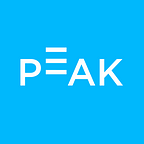Are your New Year’s Resolutions too big — or not big enough?
Three ways to ensure you stick to your resolutions
Last year, we vowed to fall in love. To get our homes and wallets organized. We told ourselves we’d enjoy life to the fullest, with noble intentions to be healthier humans free of smoking habits. What a hopeful bunch!
Indeed, in a survey of Americans, the top 2017 New Year’s Resolutions were to:
- Lose weight
- Improve ourselves
- Make better financial decisions
- Quit Smoking
- Live life to the fullest
- Spend more time with family
- Work out more often
- Learn something new on my own
- Do more good deeds for others
- Find the love or our lives
- Find a better job
What do all of these have in common?
New Year’s resolutions tend to be abstract and lofty. We know that we’re more likely to achieve goals when they’re specific, small, and concrete — so how attainable are resolutions? Are they at all helpful to our personal development?
Stanford psychologist and author of The Willpower Instinct Kelly McGonigal argues that big, lofty resolutions play an important role in changing ourselves for the better. She explains that they help us connect with our ideal selves and step into a “growth mindset” — the idea that you can change in meaningful ways with effort and support. They give us an emotional boost: “Research shows that when people resolve to change, they immediately feel more confident, in control and hopeful.”
So how can we keep our abstract emotional goals and also make concrete progress day-to-day? McGonigal argues that when you set a New Year’s Resolution, you can give it two parts: the abstract “why” to give it long-term meaning, and the concrete “what” for immediate progress.
The “why” should be big, like the resolutions in the top 10 list. It’s a moonshot goal — to get a handle on your finances, to deepen your relationship with your heritage, to be a better listener for your friends, to honor your body by being healthy. This gives your goal meaning and provides emotional motivation.
The “what” part of your goal is small: it’s what you’ll do to take your first steps toward your bigger “why” goal. You should be able to knock it out of the park on week 1 of the new year, and it’s best if you can be specific about when and where you’ll take action. For example, if your “why” resolution is to be fit and healthy, your “what” might be to run 2 miles every Saturday, or to do 10 minutes of push-ups, sit-ups, and jumping jacks before breakfast. Not only does it improve your chances of changing your habits, it demonstrates that you’re making progress. Without that, you might find yourself on New Year’s Eve a year later, reflecting on your vague resolution to get fit and concluding that trying to change is pointless.
So this year, try these 3 steps when you set New Year’s Resolutions:
- Pick your “why” goal: Reflect on what’s most important to you in life and choose an area of improvement that’s meaningful.
2. Decide on a “what” goal to accompany it: What action can you take during day 1 or week 1 of the new year? Set a time and place to do it.
3. Tell a friend about your goals to hold you accountable. Shoot them a text when you take your first “what” action.
